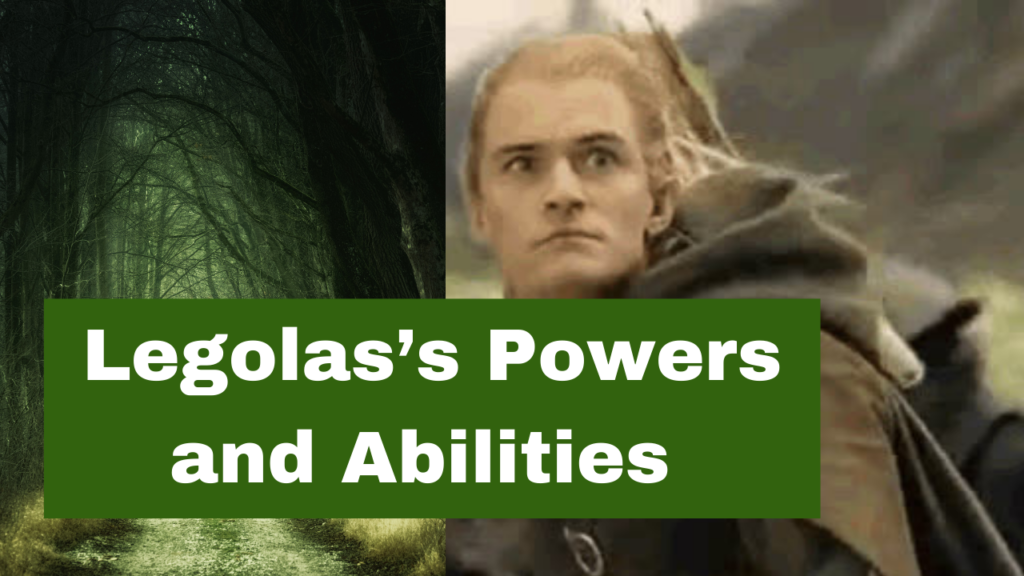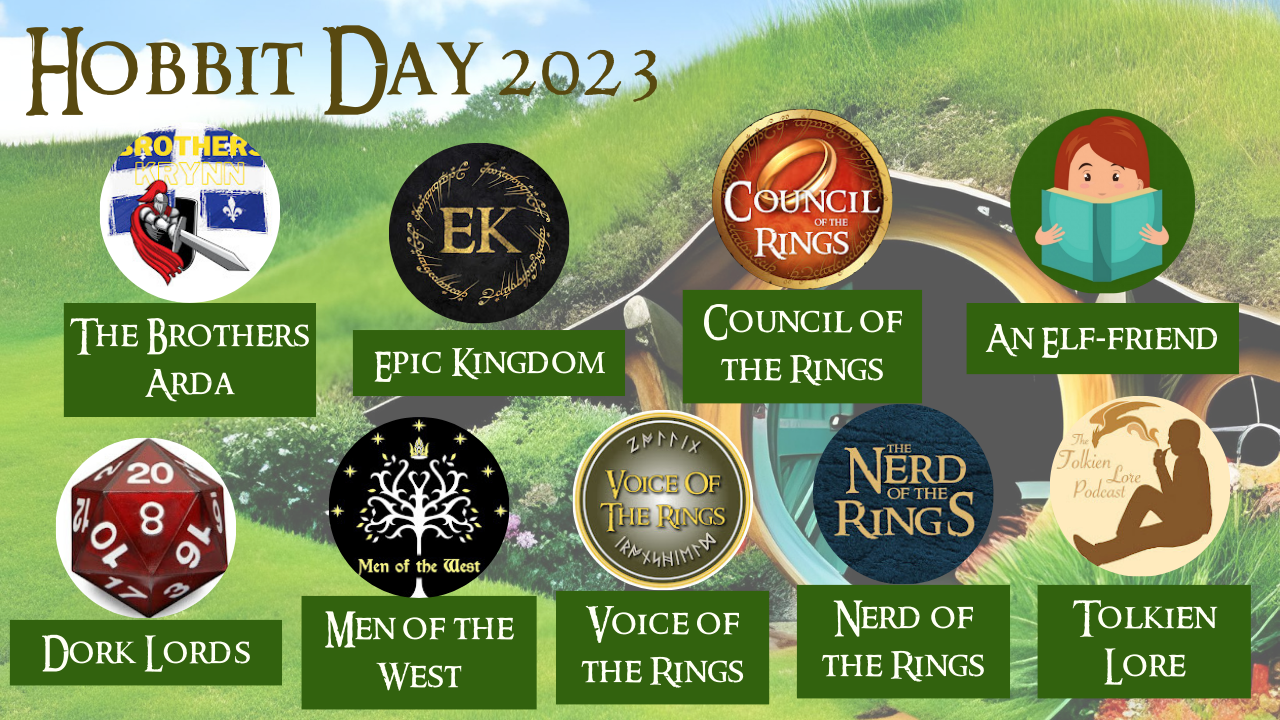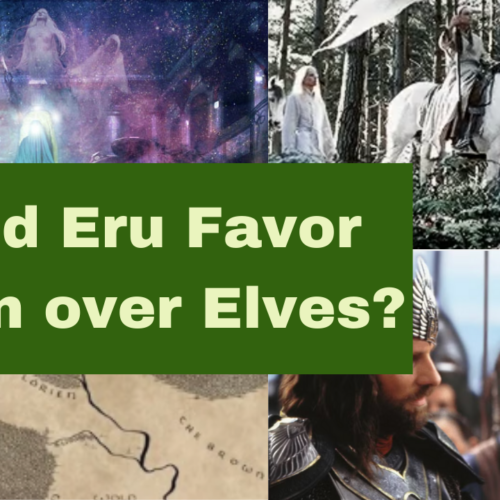Legolas was first introduced in the Council of Elrond as the only elf in the Fellowship and is the only son of Thranduil of Mirkwood. At the time, most of the Elves were not in battle unlike the previous ages, where there were more Elves fulfilling such roles.
Legolas was mainly known for his eyesight, hearing, and bowmanship, which is evident by his ability to draw a Great War-bow and shoot down a Nazgul in LOTR. He was also the most tireless of all the Fellowship and would be the companion of Aragorn and Eomer in the heat of the fighting, being the vanguard of the Army of the West. And lastly, he was also able to develop a friendship with a dwarf, Gimli, after a long standing feud between the Elves and the Dwarves.
“The Legolas of the story was an Elvish prince of Sindarin race,…clad in the green and brown of the Silvan Elves over whom his father ruled, tall as a young tree, lithe, immensely strong, able swiftly to draw a Great War-bow and shoot down a Nazgul, endowed with the still tremendous vitality of elvish bodies, so hard and resistant to hurt that he went only in light shoes over rock or through snow (I 306), the most tireless of the fellowship.”
Appreciation of Nature
Much like the Elves, Legolas would show an appreciation of nature, which was largely from his background – speaking of this custom of dwelling in trees before the Shadow came, possibly referring to the end of the first millennium of the Third Age, when a shadow fell on Greenwood the Great and became Mirkwood.
However, this was not a habit of Silvan Elves in general but rather the Galadhrim of Lórien. Thus, despite being a Sindarin Elf, and living among Silvan Elves in Mirkwood, he was not fully a Silvan Elf since his father, Thranduil, had originally came from Doriath in the First Age – showing his appreciation for nature in multiple areas of Middle-earth.
“Legolas speaks of this custom [dwelling in trees] as if it was universal among thew Galadhrim of Lórien…but it was not in fact a habit of Silvan Elves in general. It was developed in Lórien by the nature and situation of the land: a flat land with no good stone, except what might be quarried in the mountains westward and brought with difficulty down the Celebrant. Its chief wealth was in its trees, a remnant of the great forests of the Elder Days, of which the chief were the great mellyrn (‘golden-trees’) of vast girth and immense height. …it was no doubt this Shadow spreading from Dol Guldur that caused the Galadhrim who lived in the southern parts of Greenwood to retreat further and further north, making communication with those that remained west of Anduin rare and difficult.” (NoME, “Silvan Elves and Silvan Elvish”)
Physical Abilities, Agility and Bowmanship
Like any other Elf, Legolas would have a greater speed and agility of living when compared to that of a mortal man.
“…the Quendi did not and do not ‘live slowly,’ moving ponderously like tortoises, while Time flickers past them and their sluggish thoughts! Indeed, they move and think swifter than Men, and achieve more than a Man in any given length of time…only their thought, perception and reasoning seem normally beyond human speed.” (NoME, “Time-Scales)
Additionally, he was also shown to walk on top of snow and function on little sustenance.
“…Only Legolas still stepped as lightly as ever, his feet hardly seeming to press the grass. leaving no footprints as he passed; but in the waybread of the Elves he found all the sustenance that he needed, and he could sleep, if sleep it could be called by Men, resting his mind in the strange paths of elvish dreams, even as he walked open-eyed in the light of this world.” (FOTR)
Throughout the War of the Ring, Legolas would carry two weapons, with his main one being a bow given to him by Galadriel.
It was known as the Bow of the Galadhrim by some, though his ability to aim well comes from his aforementioned physical abilities like his enhanced eyesight and attunement to the environment, the latter which is shown by his appreciation of nature. Accompanied with some arrows, this bow would later allow him to shoot down a descending fell beast from the Sky, and it was longer than the other bows and weapons in Middle-earth.
Sustenance
However, in another passage it is said that Legolas did not sleep with the rest of the Fellowship, suggesting he has the power of sustenance when compared to mortals.
“Legolas was away much among the Galadhrim, and after the first night he did not sleep with the other companions, though he returned to eat and talk with them. Often he took Gimli with him when he went abroad in the land, and the others wondered at this change.”
This is because like any other Elf, Legolas does not sleep the exact same way as mortals to keep up their strength. This presented a common belief, that Elves simply do not. This belief seems to be inspired by Legolas himself. However, like any other Elf, he would have more control of his dreams than mortals.
“They occur therefore, the Eldar say, most often in “sleep” – not in “dreams”. But “dreaming” and “sleeping” are to the Elves other than to Men. In sleep the body may, as in Men, cease from all activities (save those essential to life, such as breathing); or it may rest from this or that activity or function as the fëa directs. While it is so, the mind may seek repose also, and be utterly quiet, but it may be absorbed in its own activity: “thinking” – that is, reasoning or remembering, or devising and designing; but these things are at will and of volition. The state that with the Elves nearest resembles human “dreaming” is when the mind is “feigning” or devising. It is when the mind is quiet and inactive that it most readily receives and perceives contacts from without.
Thus an Elf may stand “asleep” with eyes wakeful, and yet hardly breathe, and with his ears closed to all sound.
Though [the dreaming] is more aware and controlled than in Men, and is usually fully remembered (if the fëa so desires).”
(The Nature of Middle-earth – “Knowledge and Memory”)

Leadership and Friendship
And last but not least, Legolas forms strong bonds with the fellowship, most notably Gimli and Aragorn.
The friendship of Legolas and Gimli would be treasured by many, as they built an alliance between the Elves and Dwarves. Before then, the Elves and the Dwarves seemed to be at odds, which has occurred since the First Age – with their feud mainly concerning the jewels, the Silmarils.
This is due to the Ruin of Doriath when the Dwarves went there, as their skills were much needed in Menegroth and the Dwarves would have a lust of the Silmarils.
“Then the Dwarves looked upon the work of their fathers, and they beheld with wonder the shining jewel of Fëanor; and they were filled with a great lust to possess them, and carry them off to their far homes in the mountains. But they dissembled their mind, and consented to the task. (The Silmarillion, “of the Ruin of Doriath”)
However, Legolas and Gimli would initially start out that way, and their upcoming friendship would be appointed or forethought by Gandalf.
“‘I have heard both,’ said Gandalf; ‘and I will not give judgement now. But I beg you two, Legolas and Gimli, at least to be friends, and to help me. I need you both.’” (FOTR, “A Journey in the Dark”)
Throughout the War of the Ring, Legolas and Gimli would become friends, and continue this after Gimli joined forces with Aragorn and Legolas after the death of Boromir in Amon Hen, following Merry and Pippin to Minas Tirith.
After the War of the Ring, Legolas would bring the Elves south of Mirkwood into Ithilien. He would go with Gimli to the Undying Lands after Aragorn’s death – which can be forethought as they strengthened their bond.
“Then Legolas built a grey ship in Ithilien, and sailed down Anduin and so over Sea; and with him, it is said, went Gimli the Dwarf. And when that ship passed an end was come in the Middle-earth of the Fellowship of the Ring.” (LOTR, App. B.)


